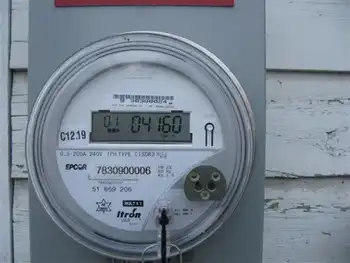Ontario Power Generation Announces Faster Decontrol
TORONTO, ON - - In a speech to the Canadian Club recently in Toronto, Ron Osborne, President and CEO of Ontario Power Generation, announced that the company is moving early to "decontrol" 4000 megawatts (MW) of its generating capacity to encourage competition in the Ontario electricity marketplace. OPG's licence conditions require the company to decontrol 4000 MW of fossil and hydroelectric generation 42 months after the market opens as a first phase objective.
"In response to a request from the Hon. Jim Wilson, Minister of Energy, Science and Technology, that we accelerate the schedule for decontrol, we will provide within the next month to the Minister and to the province's Superbuild Corporation our plan for meeting the first phase objective. We are targeting roughly 4000 MW of hydroelectric and fossil generation, including our 2140 MW Lennox station near Kingston, and our 1140 MW Lakeview station in Mississauga. Our goal is to meet our first phase objective prior to the market's scheduled opening in November. This would be more than three years earlier than required in the Market Power Mitigation Agreement," said Osborne.
"Decontrol can take many forms. We can sell assets, swap generation outputs or lease our facilities. We will protect the value of our assets and our shareholder's interests, as well as those of our customers and employees," Osborne said. Last year the company started the decontrol process by asking for expressions of interest in public-private partnerships at its Bruce nuclear facility and expects to report to its shareholder on this process in the next few weeks. Osborne also reported that the company had made solid gains in its first year of operation, particularly in the areas of its environmental, operations and financial performance.
"Our environmental performance is one of our competitive strengths. Over 99 per cent of our installed generation has been ISO 14001 certified--the international standard of excellence in environmental management. Collectively, our generation mix of hydroelectric, nuclear, and fossil produce some of the cleanest power on the continent. OPG's nuclear stations produce virtually no acid gas or greenhouse gas emissions and our ongoing investments to reduce air emissions from our fossil plants are paying off. Today these fossil plants produce the same amount of energy as they did in the early '80s with 60 per cent lower emissions. And we can and will do more," said Osborne.
OPG's nuclear stations generated eight per cent more electricity than planned in 1999. Osborne noted that the nuclear improvement program continues to make progress. The company remains committed to having its nuclear performance reach top quartile performance by 2003. In addition, plans are underway to return to service its Pickering A station. This represents 2000 megawatts of low cost and air emission free generation.
With respect to its financial performance in 1999, the company was ahead of its sales, revenues, net income and return on equity targets. In total about $1 billion on an annualized basis was returned to the government in the form of payments in lieu of taxes, dividends and water rentals.
Related News

Electricity prices spike in Alberta
EDMONTON - Albertans might notice they are paying more when the next electricity bill comes in.
According to the consumer price index, Alberta saw its largest monthly increase since July 2015 as the price of electricity in Alberta rose 25 per cent.
“So I paid negative $70 last month. I actually made money. To supply power to the grid,” said Conrad Nobert, with Climate Action Edmonton.
Norbert is an environmental activist who favours solar power and is warning that prices will continue to go up along with the rising effects from climate change.
“My thoughts are that we can mitigate the price of power…




